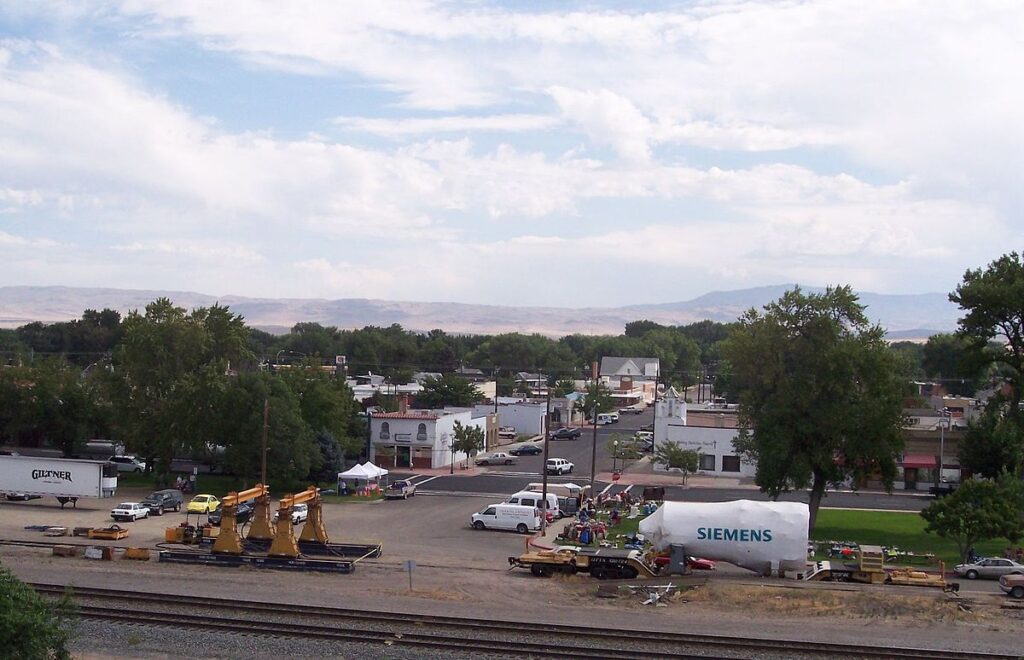
Moving to Mountain Home, Idaho: A Comprehensive Relocation Guide
Considering moving to Mountain Home, Idaho? This Air Force city offers military community, affordable living, and high desert character. With approximately 15,000 residents in 2025, Mountain Home combines base dependence with small-city atmosphere and Southwest Idaho’s military hub.
Demographic Profile to Consider If Moving to Mountain Home:
Mountain Home’s 2025 population is approximately 15,000 residents in this Elmore County city adjacent to Mountain Home Air Force Base. The median age is around 28 years, reflecting the young military population. The population is approximately 78% White, 10% Hispanic, 6% Black or African American. Mountain Home’s identity centers entirely on Mountain Home AFB with the base population often exceeding the city population. The community features primarily modest housing serving military families, commercial strips, and high desert surroundings. Mountain Home attracts military families, service members living off-base, and civilians supporting the base. The community revolves around Air Force mission and frequent transitions as personnel deploy and PCS. Find trusted local services for moving, living, and working in Mountain Home.Mountain Home Relocation Directory
Cost of Living to Consider If Moving to Mountain Home:
Mountain Home offers exceptional affordability for Idaho. Median home values range from $280,000 to $370,000 in 2025, among the state’s most affordable markets while accommodating military families. The median household income is approximately $55,000. Rental properties average $1,100 to $1,600 monthly. Idaho’s state income tax is flat 5.8%, with military pay considerations. Overall cost of living is very low, making Mountain Home highly attractive for military families and those seeking affordable Idaho living. The city provides tremendous value with military BAH supporting the local market. Housing costs create exceptional accessibility for service members and civilians. The affordability and military presence drive the economy and housing market.
Economy and Job Market:
Mountain Home’s economy depends entirely on Mountain Home Air Force Base. The base employs thousands of active-duty airmen, civilians, and contractors supporting F-15 Strike Eagle operations and composite wings. Retail, services, and businesses along Main Street serve military families. Some residents work at the Idaho National Guard facilities. The economy fluctuates with base operations and military budgets. Major employment is military, defense contracting, and military support services. Career opportunities are extremely limited outside base-related employment. Many military spouses work retail or services or commute to Boise (45 minutes). The base provides economic stability and drives all economic activity.
Education:
Mountain Home School District serves city students with schools including Mountain Home High School. Schools serve many military-connected students with support programs understanding deployment impacts and frequent transitions. School quality is adequate. The educational infrastructure accommodates the transient military population with schools experienced in supporting military children’s unique needs.
Recreation and Lifestyle:
Mountain Home offers outdoor recreation in the high desert and nearby mountains. Residents access C.J. Strike Reservoir for boating and fishing, Anderson Ranch Reservoir, and mountain recreation in the Sawtooth National Forest within day trips. The Air Force base provides recreation facilities for those with access. The city maintains basic parks. The nearby Snake River Birds of Prey National Conservation Area offers unique wildlife viewing. The lifestyle centers on military community, affordable living, and outdoor access. The high desert climate means hot summers and cold winters with less precipitation than northern Idaho. The community values military families with businesses offering military discounts and support. Living in Mountain Home means embracing military community, accepting extreme isolation (45 minutes to Boise, limited local amenities), and prioritizing affordability and base proximity. The transient military nature creates welcoming atmosphere for newcomers but also constant turnover. The area is remote with limited entertainment or shopping requiring Boise trips.
Healthcare and Services:
Mountain Home residents access healthcare through Mountain Home Air Force Base medical facilities for those eligible and St. Luke’s Elmore Medical Center for civilians. The healthcare infrastructure serves the military and civilian populations with basic services though complex care may require Boise travel.
Transportation:
Mountain Home is accessed via Interstate 84, Highway 51, and connecting routes. Boise Airport is approximately 45 minutes northwest. Most residents use personal vehicles. The city’s layout is simple. Typical travel times to Boise or surrounding areas vary. The location creates isolation with the base and Boise providing primary destinations.
Conclusion:
Moving to Mountain Home in 2025 offers military community living with Air Force base, affordable housing, and high desert character. The city’s combination of low costs, F-15 mission, and Southwest Idaho location makes it ideal for military families, service members, and Air Force civilians seeking affordable Idaho lifestyle where military community meets high desert remoteness and base mission defines daily life in Idaho’s Air Force city.

